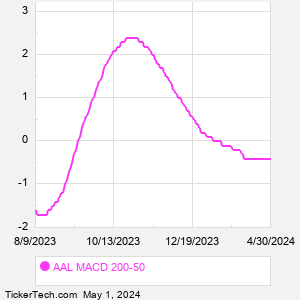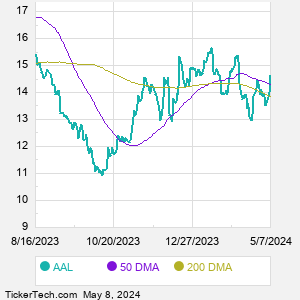American Airlines Group is a holding company. Through its subsidiaries, Co. is engaged in the operation of a primary network air carrier, providing scheduled air transportation for passengers and cargo. Co.'s regional carriers provide scheduled air transportation under the brand name American Eagle. The American Eagle carriers include Co.'s wholly-owned regional carriers Envoy Air Inc., PSA Airlines, Inc. and Piedmont Airlines, Inc., as well as third-party regional carriers including Republic Airways Inc., SkyWest Airlines, Inc., and Mesa Airlines, Inc. Co.'s cargo division provides a range of freight and mail services, with facilities and interline connections available across the globe.
When researching a stock like American Airlines Group, many investors are the most familiar with Fundamental Analysis — looking at a company's balance sheet, earnings, revenues, and what's happening in that company's underlying business. Investors who use Fundamental Analysis to identify good stocks to buy or sell can also benefit from AAL Technical Analysis to help find a good entry or exit point. Technical Analysis is blind to the fundamentals and looks only at the trading data for AAL stock — the real life supply and demand for the stock over time — and examines that data in different ways. One of those ways is to calculate a Simpe Moving Average ("SMA") by looking back a certain number of days. One of the most popular "longer look-backs" is the AAL 200 day moving average ("AAL 200 DMA"), while one of the most popular "shorter look-backs" is the AAL 50 day moving average ("AAL 50 DMA"). A chart showing both of these popular moving averages is shown on this page for American Airlines Group. Comparing two moving averages against each other can be a useful visualization tool: by calculating the difference between the AAL 200 DMA and the AAL 50 DMA, we get a moving average convergence divergence indicator ("AAL MACD"). The AAL MACD chart, in conjunction with the chart of the moving averages, basically helps in visualizing how the moving averages are showing convergence (moving closer together), or divergence (moving farther apart). |



